The Biking Vikings
My poor mother. There we were in Norway—traveling together for the first time in years—and I was spending an awful lot of time veering off to take photos of bike lanes, bike commuters and parents walking their kids to school. “Check out that protected bike lane,” I would say, or “I’m just going to fall back here and take some photos of this dad walking with his cute little girl.” To my mom’s credit, she went with it and let me nerd out.
The inevitable comparisons
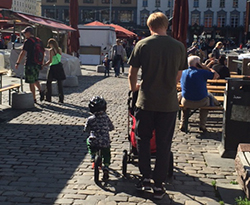
In the bicycle advocacy world, we often look toward and discuss the places that are doing things right. In the U.S., the (almost tired) comparison is Portland, Oregon. Internationally, the gold star goes to the Netherlands. Elected officials and planners from the U.S. have even traveled to the Netherlands to learn how to improve our bike infrastructure. There is certainly a lot to be learned, and I found myself constantly comparing the U.S. to the Netherlands. That got me thinking, is it fair to compare ourselves to this shining star?
It is not just about bike infrastructure…or bike education…or bike policy
In Norway, I learned that there is a lot more at play than just what we think of as “bicycling improvements.” Overall, Norway is a sparsely populated and homogenous country, making culture change a much less complex undertaking than it is in a place as huge and diverse as the U.S. In addition to the less complex demographics, there are social policies that—intended or not—support active transportation.
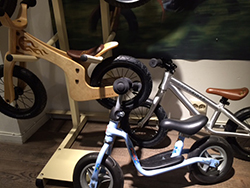 For example, after having a baby, Norwegian women have a paid year off to spend at home. New fathers get three months of paid leave. As I explored Norway’s cities and towns, I was struck by the sheer number of young families out bicycling and walking together. I also learned that many Norwegians don’t work 40 hours a week and many have flexible start and end times. This enables people to more easily commute by bike and parents to commute by bike and still walk or bike with their children to and from school.
For example, after having a baby, Norwegian women have a paid year off to spend at home. New fathers get three months of paid leave. As I explored Norway’s cities and towns, I was struck by the sheer number of young families out bicycling and walking together. I also learned that many Norwegians don’t work 40 hours a week and many have flexible start and end times. This enables people to more easily commute by bike and parents to commute by bike and still walk or bike with their children to and from school.
Starting young
I also could not help but notice that a large number of the families wandering through parks and along streets were walking with their kids on balance bikes. Teaching kids to ride without training wheels—still a fairly novel concept in the U.S.—seems widely accepted in Norway. I pulled my mom into several toy stores to take shots of the huge variety of balance bike options. I had never seen so many different kinds in one place!
One day, while eating shrimp and ice cream (a surprisingly tasty combo) at the fish market, I noticed a young boy on a balance bike with what looked like a race number on his handlebars. I wandered over to talk with his dad who explained that during the Tour de France, the Norwegian Cycling Federation hosts a “Tour de Norway.” They travel around the country and set up courses for small children to ride. Then they film the children riding and turn the footage into short pieces that are shown during commercial breaks in the coverage of the Tour de France. His son had participated and was still proudly sporting his race number.
What can we learn from the Biking Vikings?
I am happy to report that through our Safe Routes to School programs at Bicycle Colorado, we are teaching kids to ride and getting kids excited about bikes all the time. It would be fun to take this to a higher level—maybe a “Pro Balancing Challenge” featuring kids from all the host communities during the USA Pro Challenge.
 While the Biking Vikings inspired some new ideas, they also helped me to understand that we are comparing apples to oranges when we look longingly toward European bike culture. Things are changing in the U.S., and I am so proud to be a part of this change, but I also have to be patient, knowing that improving things for biking is a complex puzzle.
While the Biking Vikings inspired some new ideas, they also helped me to understand that we are comparing apples to oranges when we look longingly toward European bike culture. Things are changing in the U.S., and I am so proud to be a part of this change, but I also have to be patient, knowing that improving things for biking is a complex puzzle.
Norway reminded me that we must appreciate that many other variables come into play, such as the fact that Americans, on average, work more hours per week and take fewer vacation days than Europeans. Knowing this encourages me to think outside the box when it comes to figuring out how to make the U.S. more bike friendly. Maybe, just maybe, in order to increase active transportation trips, we also need to shorten the work week and increase vacation time. I wonder if my boss will buy it?
Leave A COMMENT
Our twitter feed is unavailable right now.
The Latest News
view all- Jun 13, 2024
- by Bicycle Colorado
Discover Denver With Denver Century Ride
- Bicycling in Colorado,
- Denver,
- Event Member Spotlight,
- Events
- No Comments

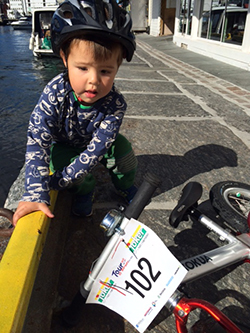







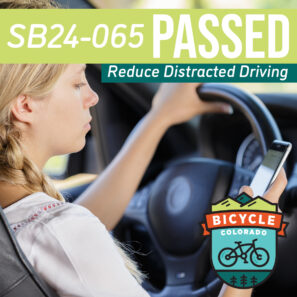
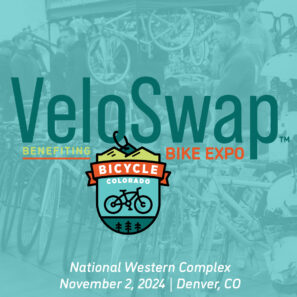
COMMENTS (1)
JJ -
Great story Jenna!
I often drag my wife and kids to places and geek out on photos. I’ll tell me daughter to “walk up there normally so I have some scale in my photo!” I co-lead my kids’ walking school bus and lead the biking school bus every Friday!
J.J.